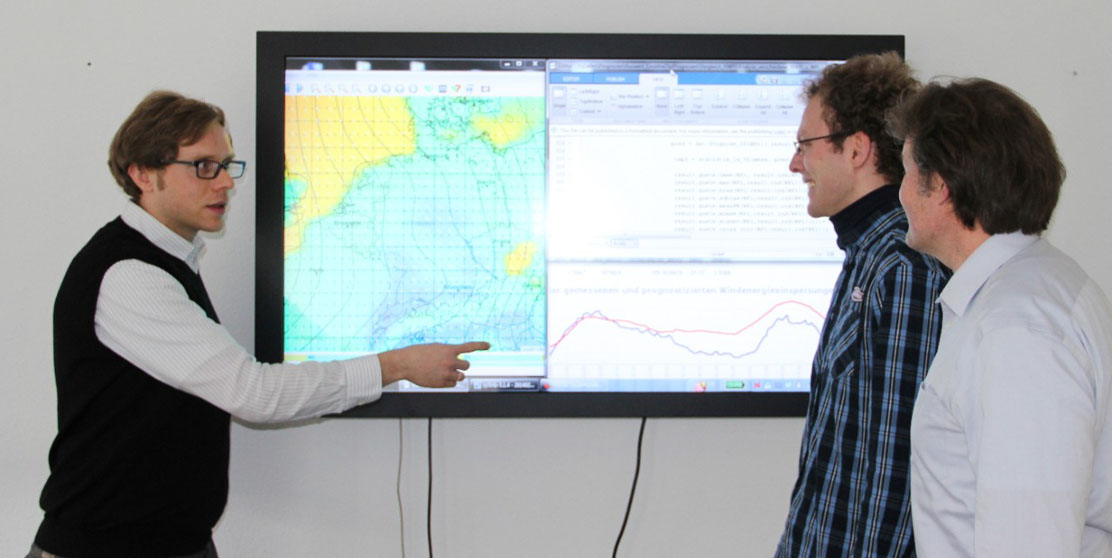New potential for wind and solar power generation forecast improvements – “Using ECMWF’s forecasts” Workshop 2024
In June 2024 ECMWF, the European Centre for Medium-Range Weather Forecasts, held the workshop “Using ECMWF’s Forecasts (UEF2024)”, in which various projects, tools and services related to ECMWF’s weather forecasts were presented. We will share with you some highlights our Senior Meteorologist, Huan Zang, gathered from this event.
Chatbot for weather and climate Information
Based on ChatGPT ECMWF is developing a Large Language Model (LLM) specialized on weather and climate information. The undergoing project of ECMWF’s experimental AI-based assistant already enables users to easily get weather and climate information by chatting with a bot. By incorporating ECMWF’s high-quality input data, the LLM can provide valuable information for example about temperature, precipitation or geopotential height. Currently, the available weather parameters are limited but we are looking forward to the new possibilities this technology will bring soon.

AI generated map from https://chat.ecmwf.int/
ECMWF’s data driven weather forecast model AIFS (Artificial Intelligence Forecasting System)
Data-driven forecasting models are under fast development. In the ECMWF Workshop the results of the comparative assessment of the AIFS weather forecasts showed, that they need much less computing power and time comparing to physics-based NWP models, and generally performs better at forecasting lager-scale circulations. But the results are worse for extreme weather and the error increases with horizon. We are looking forward to the ensemble AIFS forecasts, which will be released soon. Meanwhile we are working on the integration of AIFS into our data system in order to be able to use its positive characteristics for our forecasts in the future.
High resolution data for extreme weather events
To better manage extreme weather and climate change in Europe, the EU project Destination Earth (DestinE) lead by ECMWF, ESA and EUMETSAT is working on the creation of a digital twin of earth. The goal is to use power tools like high-performance computing, cloud computing and artificial intelligence to handle and analyse massive datasets for environmental monitoring and prediction. The development team of the Weather-Induced Extremes Digital Twin promises to offer new daily forecasts with higher spatial resolution for zoom-in on extreme weather events.
Natural air pollution events – Sahara dust handling
The Copernicus Atmosphere Monitoring Service (CAMS) has been developed to mainly track the increasing concentration of the greenhouse gases and the cooling effect of aerosol. While using more realistic aerosol and chemistry schemes and more and newly reprocessed satellite datasets, CAMS may provide a good insight of solar irradiation change under the influences of e.g. Sahar dust. The forecast quality will be first carefully evaluated to see if this input data can have positive impact on solar power generation forecasting.
Get to know more!
At enercast we are curious about the impact of the several new datasets and the use of the new tools on our power generation forecasting quality. Development and testing work is already in progress. If you want to know more about our latest product improvements and how you can benefit from it, please contact us.


 Back to overview
Back to overview 

